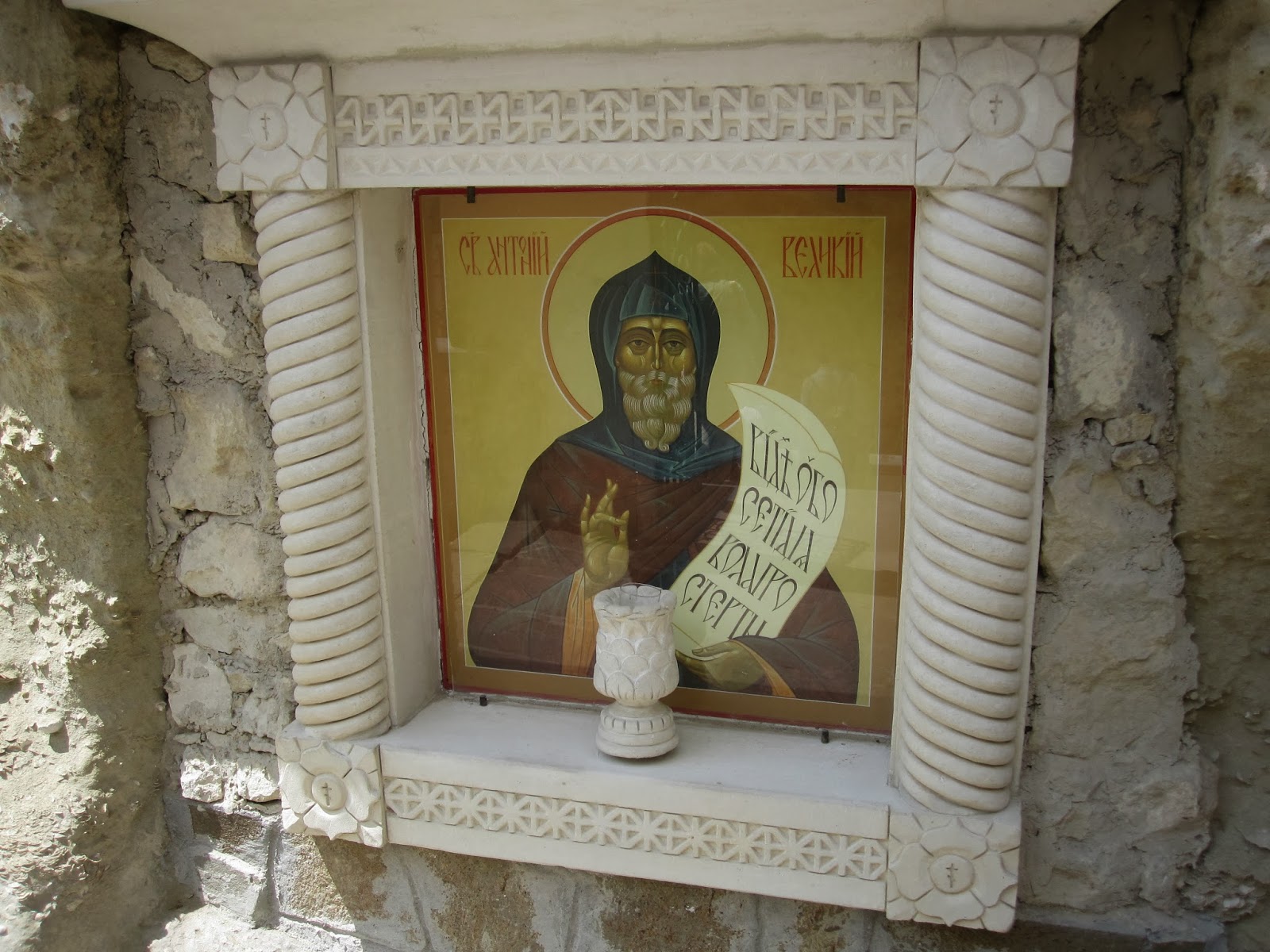Given current events in Crimea, I have been thinking about our visit there in 2010. We arrived by ship in Sevastopol, which has been in the news lately as the home of the Russian Black Sea fleet.
 |
| Harbor in Sevastopol, Ukraine. |
 |
| Part of the Russian fleet in Sevastopol. |
We took a bus out into the countryside, past vast fields of lavender, and grapevines
 |
| Fields of lavender on the mountains and grapes in the foreground. |
to visit Uspensky Cave Monastery, also known as the Assumption Monastery of the Caves and Bakhchisaray Cave Monastery. It is located in a valley south of Bakhchisaray (or Bakhchysarai). The monastery buildings are erected along steep limestone cliffs, with the cliff face used as the back wall for several buildings and other buildings built completely inside of caves.
 |
| Uspensky Monastery - picture taken from the other side of the canyon, obtained from here. |
 |
| Another view of the monastery from the other side of the canyon, taken from here. |
Legend has it that a shepherd was out at night and noticed a candle shining above the limestone cliffs illuminating an icon of the virgin Mary.The icon was brought back to the palace of the prince. The next day the icon was found again on the cliff where it had been found the day before. The shepherd brought it back to the prince and again, the next day, the icon had returned to the cliff. The people decided that it was meant to stay where they'd seen it and they built a chapel at the place and steps up the cliff to reach it.
 |
| On the path up to the monastery, glimpses of it appear in the rocks above. |
 |
| More became visible as we got closer. |
 |
| Cliffs on the other side of the canyon showed evidence of habitation on the other side. |
 |
| This structure is built into the cliff overhang on the other side of the canyon. |
 |
| A little plaza at the base of the cliff with some gardens, a spring and some icons. |
 |
| We learned that virtually all Orthodox priests sport beards. |
 |
| Steep steps up to another level of the monastery. |
 |
| Tunnel through the gold domed building. |
 |
| More steps beyond the gold domed building continue up. |
 |
| Photography was not allowed inside the monastery inside the cave and so we were not able to get a photo of the Mary icon. |
 |
| The plaza below, and even more building below it. |
Uspensky Monastery can be traced back to the 15th century, but the monks claim it goes even further back, to the 8th century. They claim it was abandoned after Byzantium (Consantinople) lost control of the area and the records were destroyed. In modern times, the monastery was closed in 1921 by the Soviet government and then reopened again in the early 1990s after the Soviet Union dissolved and Ukraine got its independence. With Crimea likely being annexed into Russia, a question is whether religion will again be squelched in this area? My guess is that Russia will not crack down on religion to the same extent that the Soviets did and that the people will have more freedom to worship and to move about.

























As this has become a major tourist attraction in the modern age, I'm sure it would be left alone or even supported, as are the Orthodox cathedrals throughout Russia. It is hard to imagine hewing this into the mountainside. Amazing place.
ReplyDeleteOne of the many benefits of travel--suddenly, world events seem a lot more germane. That monastery is amazing.
ReplyDelete